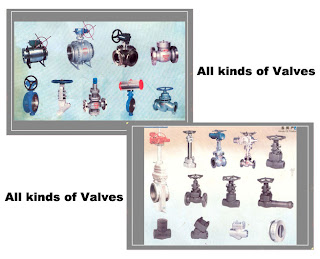the valve supplier
the valve supplier

if you are interesting in the Cast Steel and the Ball valve, you can contact the CGVALVE1234. it is a supplier of the valve.
there are another Chinese suppliers of the valve.
we will introduce many different types of valves and the information of it to you. the basic valve types can be divided into two general groups: stop valves and check valves.(it including ball valve,globe valve,gate valve,butterfly valve and so on.)

promulgator
valve
时间:
5/16/2007
23
comment
![]()
 It is from SHANXI SHENGYUAN PIPES IMP.&EXP.TRADING CO.,LTD
It is from SHANXI SHENGYUAN PIPES IMP.&EXP.TRADING CO.,LTD  High & Middle Pressure Casting Steel Valve
High & Middle Pressure Casting Steel Valve
Although many different types of valves are used to control the flow of fluids, the basic types can be divided into two general groups, they are stop and check valves.
Stop Valves
It can be divided into four general categories: gate, globe, ball , and butterfly valves.
GATE VALVES.- they are used when a straight-line flow of fluid and minimum restriction is desired. it is so named because the part that either stops or allows flow through it acts somewhat like the opening or closing of a gate and is called, appropriately, the gate. The gate is usually wedge shaped. When it is wide open, the gate is fully drawn up into the valve, leaving an opening for flow through it the same size as the pipe in which it is installed. they are not suitable for throttling purposes since the control of flow would be difficult due to it design and since the flow of fluid slapping against a partially open gate can cause extensive damage to it. Except as specifically authorized, it should not be used for throttling.
They are classified as either RISINGSTEM or NONRISING-STEM valves. On the nonrising-stem it shown in figure 9-19 the stem is threaded on the lower end into the gate. As the handwheel on the stem is rotated, they up or down the stem on the threads, while the stem remains vertically stationary. This type of it almost always has a pointer-type indicator
GLOBE VALVES.- it is probably the most common in existence. it derives its name from the globular shape of it body. However, positive identification of a globe valve must be made internally because other types may have globular appearing bodies. it inlet and outlet openings are arranged in several ways to suit varying
BALL VALVES.- as the name implies, are stop valves that use a ball to stop or start the flow of fluid. The ball performs the same function as the disk in it. When it handle is operated to open the valve, the ball rotates to a point where the hole through the ball is in line with it body inlet and outlet. When it is shut, which requires only a 90-degree rotation of the handwheel for most valves, the ball is rotated so.
BUTTERFLY VALVES.- it is one type of which is shown in figure 9-21 may be used in a variety of systems aboard ship. they can be used effectively in freshwater, saltwater, JP-5, F-76 (naval distillate), lube oil, and chill water systems aboard ship. The butterfly valve is light in weight, relatively small, relatively
it has a body, a resilient seat, a butterfly disk, a stem, packing, a notched positioning plate, and a handle. The resilient seat is under compression when it is mounted in the body, thus making a seal around the periphery of the disk and both upper and lower points where the stem passes through the seat. Packing is provided to form a positive seal around the stem for added protection in case the seal formed by the seat should become damaged.
Butterfly valves are relatively easy to maintain. The resilient seat is held in place by mechanical means, and neither bonding nor cementing is necessary, Because the seat is replaceable, the valve seat does not require lapping, grinding, or machine work.
